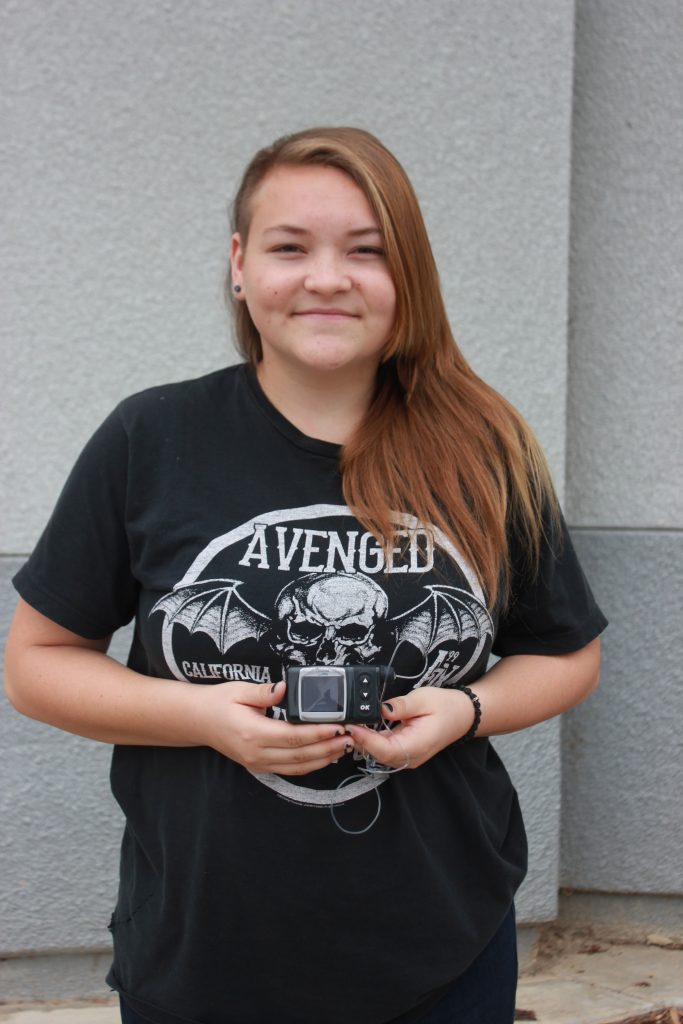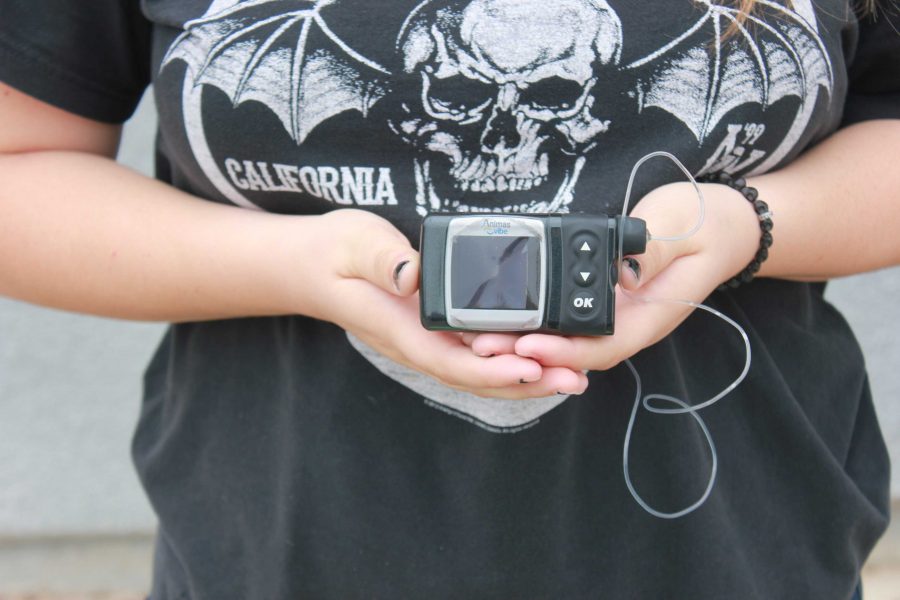News Medical defines diabetes mellitus as a condition in which the body fails to properly utilize the ingested glucose, colloquially known as sugar. It’s an epidemic affecting more than 29 million Americans, and 380 million people worldwide according to Diabetes Research Institute. To better emphasize the severity of those diagnosed, diabetes takes more lives than AIDS and breast cancer combined.

The pancreas, responsible for producing the hormone insulin, is rendered ineffective in a diabetic body and is unable to access cells allowing glucose to enter for the sake of creating energy. Therefore insulin must be injected into the body to regulate blood glucose levels, and if those levels reach an extreme high or low, the body can experience hyperglycemia or hypoglycemia.
“I always have to consider it, even when I fall asleep. It’s more than just food and an unhealthy lifestyle,” Tilly Dillon said. “Everything affects diabetes including stress, heat, emotion, etcetera.”
Advances in technology help diabetics live their everyday lives without the need to constantly inject themselves with insulin, because they have an insulin pump to supply them with the proper amount. A little patch connects to the patient, usually on the stomach, and contains a tiny needle and catheter to deliver the insulin which is inserted into fatty tissue.
In the average, non diabetic body, fasting (not eating) causes glucose levels to be around 70 to 90 mg/dL, and two hours after eating blood sugar is less than 140 mg/dL- which are perfectly normal. Blood sugar levels around 200 mg/dL at any given time as well as two consecutive fasting tests above 126 mg/dL actually serve as prognoses of diabetes.
Before continuation of the topic, first it is crucial to note the differences between type 1 and type 2 diabetes.
Type 1, also known as juvenile diabetes, only affects five percent of victims of the disease and currently has no cure. It develops in children and sometimes adults, possibly due to genetics or exposure to certain viruses. With this condition, the pancreas produces little to no insulin.
[soundcloud url=”https://api.soundcloud.com/tracks/266039523″ params=”color=ff5500&auto_play=false&hide_related=false&show_comments=true&show_user=true&show_reposts=false” width=”100%” height=”166″ iframe=”true” /]
The most common form of diabetes, type 2, affects 27 million Americans. It’s also thought of as a lifestyle disease, and is associated with high blood pressure, high cholesterol, and obesity. Extra weight, especially around the midsection, can cause insulin resistance- where glucose builds up in the blood rather than being properly absorbed by cells.
Pre-diabetes is another problematic epidemic; it comes with no warning sign. It has no diagnosable symptoms and appears before type 2 prevails. Blood sugar is noticeably higher, but not extreme enough to diagnose as type 2. Approximately 86 million people in the United States over 20 years of age have pre-diabetes.
[divider]Its presence in our community[/divider]
In March of 2000 at the age of three, senior Sara Morda was diagnosed with type 1 diabetes.
Her family noticed she was drinking a lot of water, including leftover water from a bath, which she drank so much of that she was found passed out in the hallway.
Extreme thirst is a common symptom of diabetes, along with but not limited to extreme fatigue, blurry vision, and chronic urination.
Since first grade, Morda has used a pump to regulate her insulin levels, and currently makes use of an app called Dexcom. She has a small attachment that latches to her body and sends her information to the app via Bluetooth, which can be viewed right in hand. And now, she pricks her finger and manually checks her blood sugar only once a day.
[soundcloud url=”https://api.soundcloud.com/tracks/266039627″ params=”color=ff5500&auto_play=false&hide_related=false&show_comments=true&show_user=true&show_reposts=false” width=”100%” height=”166″ iframe=”true” /]
Currently in the midst of a study, Morda is testing a new diabetic drug to help significantly lower blood sugar.
Also affected by type 1 is 12 year old DATA student Tilly Dillon, who was diagnosed just two years ago on Memorial day.
“My initial thoughts on diabetes were that it was going to ruin my life, but now I think of it as a part of me,” said Dillon.
She has quite the support group – her whole family helps care for her, including her parents who take turns waking up every night at midnight to test her blood sugar levels.
“I always have to consider it, even when I fall asleep. It’s more than just food and an unhealthy lifestyle,” she said. “Everything affects diabetes including stress, heat, emotion, etcetera.”
“We suffered a lot in the beginning. Initially we were just in shock,” said mother and ATLAS teacher Stephanie Dillon. “[My husband and I’s] marriage took a hit too because the need for control is overwhelming.”
At first, the family was losing sleep which affected their decision making and health as well. Once they began to work as one and pull together as a team, Stephanie and her husband began alternating night shifts to check on Tilly, they “grew stronger and have come to a better place all together with it,” Stephanie said.
“Diabetes has stopped me to do things like being an astronaut and being in the military, but as long as I take care of it, it doesn’t really stop me from doing anything I want,” Tilly Dillon said.
Navigating through life since her diagnosis, Tilly Dillon has become more aware of others with special needs as well and hopes to inspire others not to quit their passions.
“Diabetes has stopped me to do things like being an astronaut and being in the military, but as long as I take care of it, it doesn’t really stop me from doing anything I want,” Tilly Dillon said.
A devoted ballerina, Tilly Dillon has been en pointe since the age of ten, and continues to dance with help from her pump and Dexcom, which also sends her parents status updates as well.
When Tilly experiences a low glucose level, she gets tired, shaky, and sweaty, and describes the pain as like “having your stomach being pulled out of you, but worse.” A glucose high leaves her feeling tired and thirsty.
Diabetes is not a disease to be taken lightly- it has severe impacts on the body and mood. As stated before, it’s currently not curable, but luckily, is treatable. If you feel the slightest symptoms of diabetes mellitus, consult your doctor.
Background Photo Credit: Grayson McCoy / The Foothill Dragon Pres








